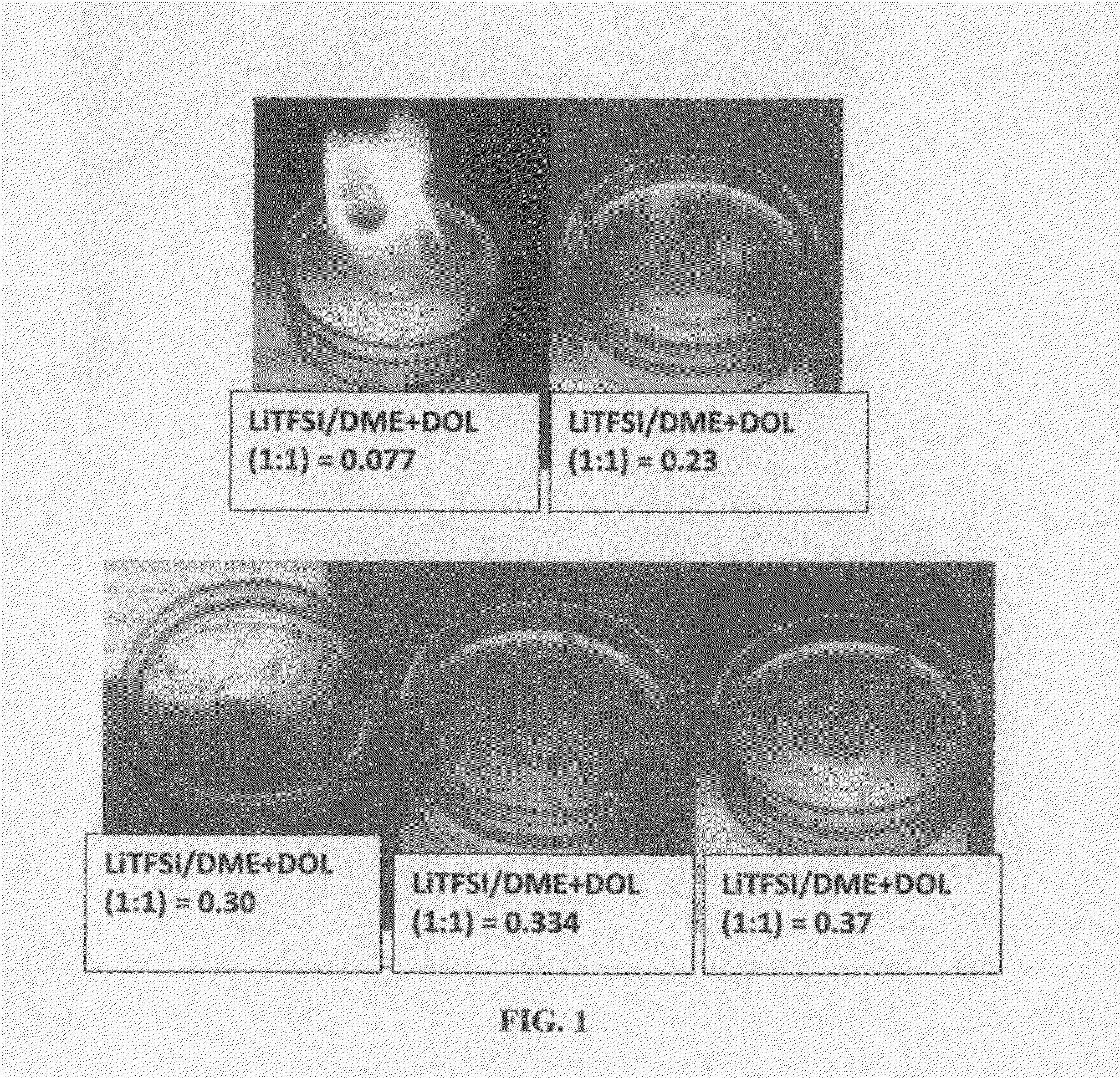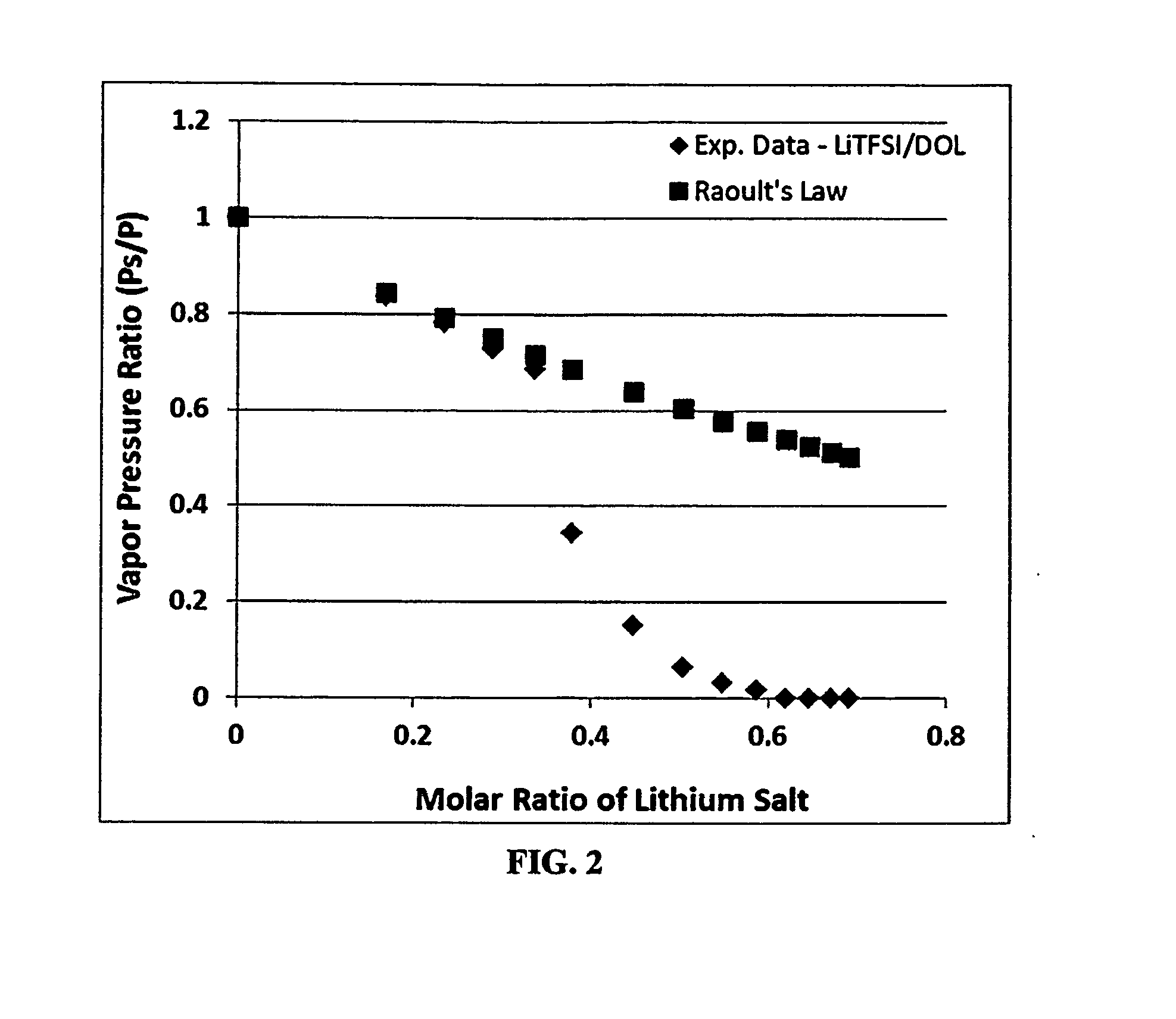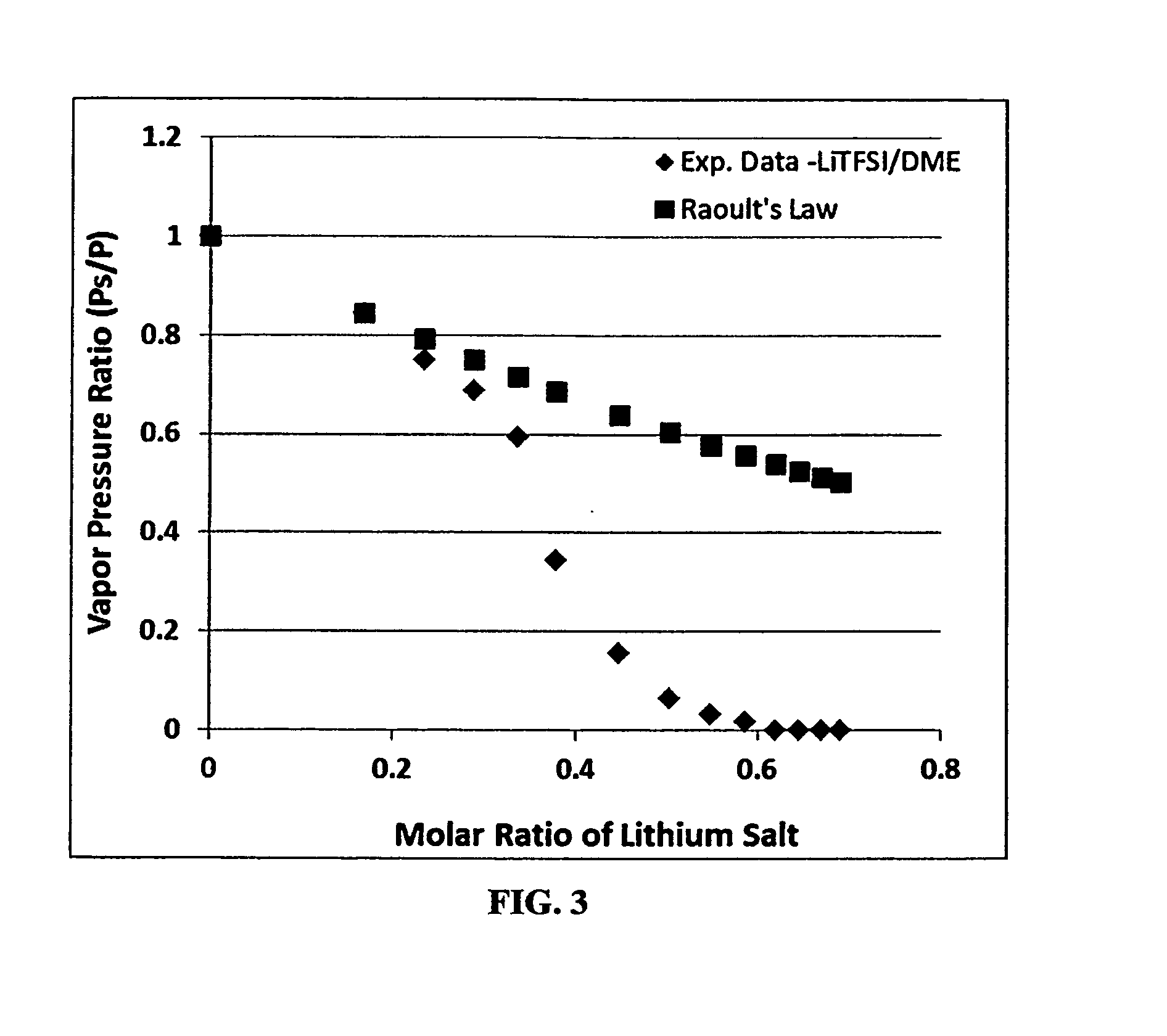Lithium-Selenium secondary batteries having non-flammable electrolyte
a lithium-selenium secondary battery, non-flammable technology, applied in the direction of non-aqueous electrolyte cells, cell components, electrochemical generators, etc., can solve the problems of not being technically feasible or viable, and not being able to achieve such a high concentration of lithium salt in organic solvent, etc., to prevent potential li metal dendrite internal short circuit and thermal runaway problems, and low electric and ionic conductivity , the effect of low cos
- Summary
- Abstract
- Description
- Claims
- Application Information
AI Technical Summary
Benefits of technology
Problems solved by technology
Method used
Image
Examples
example 1
Some Examples of Electrolytes Used
[0127]A wide range of lithium salts can be used as the lithium salt dissolved in an organic liquid solvent (alone or in a mixture with another organic liquid or an ionic liquid). The following are good choices for lithium salts that tend to be dissolved well in selected organic or ionic liquid solvents: lithium borofluoride (LiBF4), lithium trifluoro-metasulfonate (LiCF3SO3), lithium bis-trifluoromethyl sulfonylimide (LiN(CF3SO2)2 or LITFSI), lithium bis(oxalato)borate (LiBOB), lithium oxalyldifluoroborate (LiBF2C2O4), and lithium bisperfluoroethy-sulfonylimide (LiBETI). A good electrolyte additive for helping to stabilize Li metal is LiNO3. Particularly useful ionic liquid-based lithium salts include: lithium bis(trifluoro methanesulfonyl)imide (LiTFSI).
[0128]Preferred organic liquid solvents include: ethylene carbonate (EC), dimethyl carbonate (DMC), methylethyl carbonate (MEC), diethyl carbonate (DEC), propylene carbonate (PC), acetonitrile (AN),...
example 2
Vapor Pressure of Some Solvents and Corresponding Quasi-Solid Electrolytes with Various Lithium Salt Molecular Ratios
[0130]Vapor pressures of several solvents (DOL, DME, PC, AN, with or without an ionic liquid-based co-solvent, PP13TFSI) before and after adding a wide molecular ratio range of lithium salts, such as lithium borofluoride (LiBF4), lithium trifluoro-metasulfonate (LiCF3SO3), or bis(trifluoro methanesulfonyl)imide (LiTFSI), were measured. Some of the vapor pressure ratio data (ps / p=vapor pressure of solution / vapor pressure of solvent alone) are plotted as a function of the lithium salt molecular ratio x, as shown in FIG. 2-5, along with a curve representing the Raoult's Law. In all cases, the vapor pressure ratio follows the theoretical prediction based on Raoult's Law for up to xs / p value, the vapor phase of the electrolyte either cannot ignite or cannot sustain a flame for longer than 3 seconds once initiated.
example 3
Flash Points and Vapor Pressure of Some Solvents and Corresponding Quasi-Solid Electrolytes with a Lithium Salt Molecular Ratio of x=0.3
[0131]The flash points and vapor pressures of several solvents and their electrolytes with a lithium salt molecular ratio x=0.3 are presented in Table 1 below. It may be noted that, according to the OSHA (Occupational Safety & Health Administration) classification, any liquid with a flash point below 38.7° C. is flammable. However, in order to ensure safety, we have designed our quasi-solid electrolytes to exhibit a flash point significantly higher than 38.7° C. (by a large margin, e.g. at least increased by 50° and preferably above 150° C.). The data in Table 1 indicate that the addition of a lithium salt to a molecular ratio of 0.35 is normally sufficient to meet these criteria.
TABLE 1The flash points and vapor pressures of select solvents and theirelectrolytes with a lithium salt molecular ratio x = 0.3.FlashFlash pointVapor pressurepoint(° C.) ...
PUM
| Property | Measurement | Unit |
|---|---|---|
| flash point | aaaaa | aaaaa |
| flash point | aaaaa | aaaaa |
| flash point | aaaaa | aaaaa |
Abstract
Description
Claims
Application Information
 Login to View More
Login to View More - R&D
- Intellectual Property
- Life Sciences
- Materials
- Tech Scout
- Unparalleled Data Quality
- Higher Quality Content
- 60% Fewer Hallucinations
Browse by: Latest US Patents, China's latest patents, Technical Efficacy Thesaurus, Application Domain, Technology Topic, Popular Technical Reports.
© 2025 PatSnap. All rights reserved.Legal|Privacy policy|Modern Slavery Act Transparency Statement|Sitemap|About US| Contact US: help@patsnap.com



